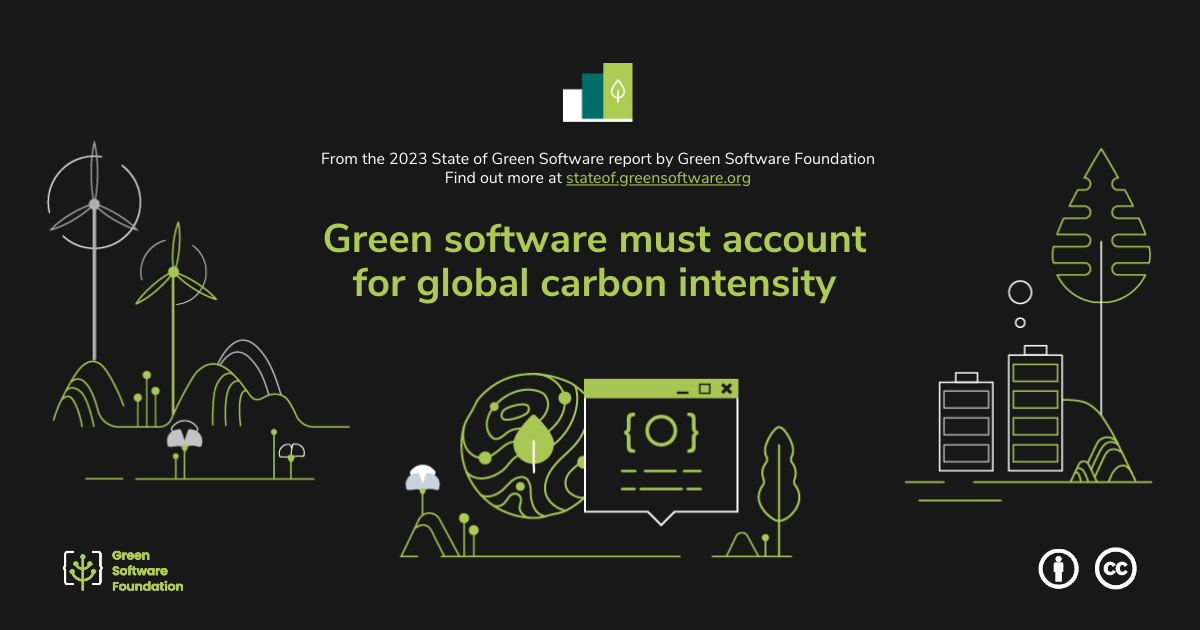Green software must account for global carbon intensity
According to some SOGS survey respondents, software practitioners should pay more attention to renewable energy infrastructure and carbon emissions in the data center space, where green software tooling can have a positive impact. Green software development could help with efforts to measure and report carbon intensity to help software practitioners make informed decisions about their energy sources. One respondent saw more opportunities to increase developers’ awareness of the relationship between software and renewable energy, stating, “You also didn’t ask much about awareness of renewable energy. Again, because I am greatly aware and actively involved in climate change action and renewable energy, I generally feel that the software industry itself is pretty non-involved, other than in areas where software is applied to modeling and running applications in climate and energy management systems.”
Another respondent of the SOGS survey notes that investing in data centers running on renewable energy is important, and that measuring energy consumption and carbon emissions can be done by monitoring software: “There is practically no mention of it in the infrastructure space. Outside of Microsoft’s own commitments for their Azure data centers, there is no mention of power/resource consumption from a sustainability perspective. There is an overwhelming amount of monitoring software available with associated machine learning recommendations. There is an opportunity to include energy/carbon consumption in these metrics to aid green software development at the bottom of the stack.”
Yet another respondent suggested that developers “write software that can accelerate our understanding of clean energy production to accelerate its creation and adoption to create a future with abundant and clean energy to move our focus away from micro optimizations with minimal cumulative impact.”
In addition to helping software practitioners see the connection between their work and energy infrastructure, having more globally representative carbon intensity data will be crucial to decarbonization efforts. One issue with global emissions data is that some regions have more robust data available than others. Electricity Maps, which offers data on carbon emissions and electricity sources, which can then integrate with apps, smart devices, software products, and carbon accounting processes, recently included data from Northern India, a region previously left out of carbon intensity mapping. In addition to attempting to incorporate data from every country on the planet, Electricity Maps distinguishes between imports and exports because the carbon intensity of consumed electricity can be much higher than that of produced electricity. Only looking at the electricity production of a country can vastly underestimate that country’s carbon intensity. The Green Web Foundation also released global grid intensity data supplied by Ember, which provides carbon intensity information for 78 countries and 11 regions. Increasing awareness and access to such data can help foster innovation around measurement and reporting tooling while helping software practitioners make better decisions about their energy use.
